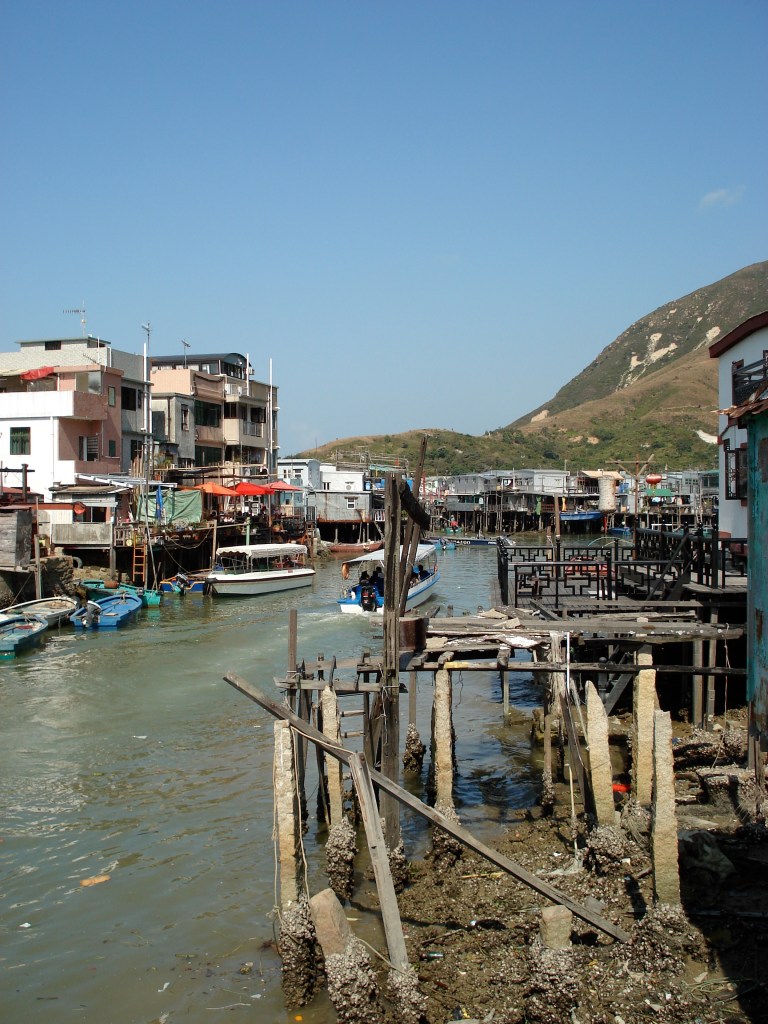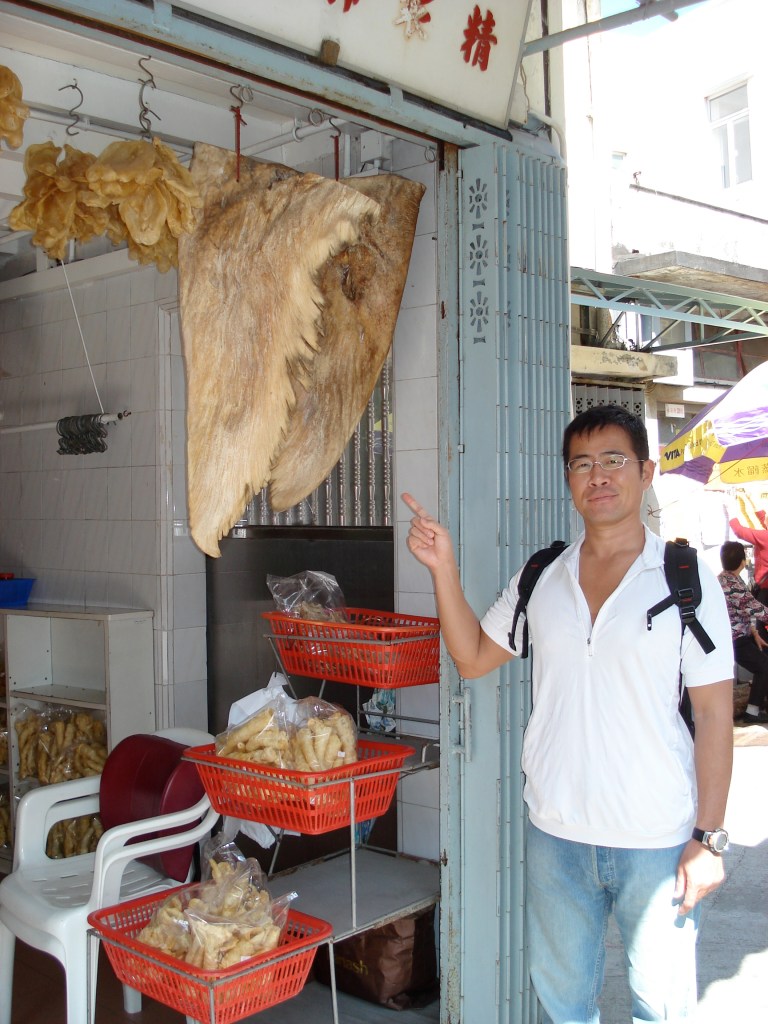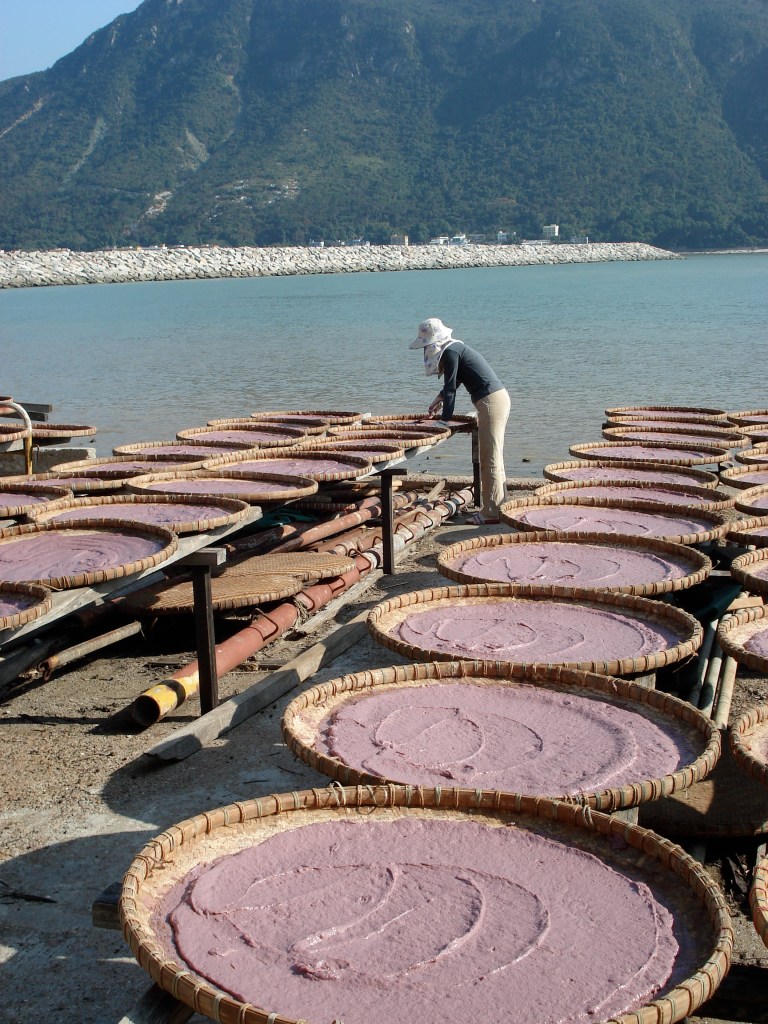“TAI O IS THE ONLY PARADISE IN F*CKING HONG KONG”, reads the graffitti that spread across the wall on the old pier of Tai O.
I stood there amongst the fishermen, and had to wonder who would have written this and why. Could it have been some teenagers with a spray paint can, who were simply bored one day and wanted to practice a newly acquired curse word? Or could it have perhaps been an older villager who wrote this in resistance to the impending unending march of modernism in Hong Kong that would inevitably one day claim this tiny fishing town, stranded at the end of Lantau island, forcing it to change, knocking down its defining characteristics to become another town of highrises and 7-11s? Perhaps even a gwailo who decided to live in Tai O, and fell in love with the sleepy village? I was not sure.
But one thing is for sure — for now, Tai O seems to be one of the few places in Hong Kong that actually feels old, and quiet, and peaceful. Far from the hustle and bustle of the city, an hour away from the closest train station, sitting all by itself on the coast, far from anywhere else on Lantau, Tai O is a unique little area of Hong Kong that is doing its best to hold on to its traditional way of life.

Known for its stilt houses, which were built by the Tanka people, this tiny, isolated fishing community has been built along the tidal flats and mangrove swamps. During low tide, the boats are beached between the houses, and as the tides rise, the fishermen head out for their daily catch.
At first glance, Tai O looks a bit like a slum — old wooden houses in disrepair, many of them abandoned as people move out of the tiny town and into the city to make money and live in modern skyscrapers, tiny walkways and gang planks, roofs patched up with corrugated iron. And the tidal flats themselves are not exactly so appetising. Mud, herons eating crabs, swampy looking earth.
But walk around and you undoubtedly can feel the personality of the area; a local culture, a way of life long gone in Hong Kong. You can walk through the maze of stilt homes and find yourself unexpectedly passing through someone’s living room. An old man lays dozing on the couch, undisturbed by your footsteps. Little kids glance up from their game, obviously accustomed to curious weekend tourists wandering around, unphased by people trekking through their territory.
Although the Tanka stilt houses are Tai O’s claim to fame, that is only one small section of town. Away from the stilt area, and back on dry land, the village has a quaint little downtown area, restaurants, mahjong parlours where the click-click-click of moving tiles never stops, stalls selling dried seafood, starfish, scallops, sun-dried fish stomach. A small building houses a historical centre with old agricultural tools, antiques from another time.

Another thing that Tai O is famous for is shrimp paste, so we went out looking for it. We finally found the area at the edge of town, and have to say it makes sense to make it so far away from the town centre because it stinks! One of the stinkiest foods in Hong Kong is ‘stinky tofu’, the highly fermented and extremely pungent tofu dish. The second stinkiest thing I have to say is Tai O shrimp paste drying in the sun. The tiny red shrimp are stored in giant vats in the sun where it sort of liquifies. Then they put the concoction through a machine that grinds it all up. It is finally spread over a flat bamboo plate and it sits in the sun to dry out a bit. You could smell that thing A MILE AWAY. I feel sorry for the people living nearby!

We spent the rest of the day just walking about, taking in the sights, makoing these people’s way of life. We passed some temples, ambled about by the mountains, ate some lunch (very yummy wontons), and decided to call it a day. Tai O is great for a day trip and I would highly recommend it. Although visitors to Hong Kong have a lot of options in the city, it is definitely worth venturing out and visiting places like Tai O, as it lets you see a different way of life, lets you peek into how these remote areas used to be.
Every now and then talk pops up in the newspapers about how the government is going to demolish all the stilt houses and relocate the residents onto dry land and ‘develop’ the town into a proper tourist site, so my advice to you is to go see this tiny town before it disappears….




how yuh have to go tai from hong kong island?
Nick — I’d suggest taking the MTR to Tung Chung, then the Lantau Bus from Tung Chung to Tai O. There are signs leading you to the bus terminal, outside the mall. Or, the way we went, was to go to the Tung Chung Ferry, and take a ride over to Tai O by boat, which I thought was lovely. The boat is not that frequent, so plan it carefully.